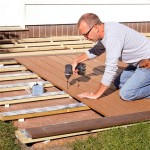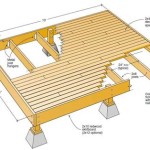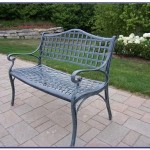Can You Build a Wood Deck Over a Concrete Patio?
Building a wood deck over an existing concrete patio is a viable option for homeowners seeking to enhance their outdoor living space. It offers a way to transform a plain concrete surface into a warmer, more inviting area. However, several factors must be considered before undertaking this project. Proper planning and execution are crucial for a successful and long-lasting deck.
One of the primary advantages of building over concrete is the readily available, stable foundation. This eliminates the need for extensive excavation and footing construction, potentially saving significant time and cost. The concrete provides a level surface and eliminates concerns about soil settling or frost heave, which can affect decks built directly on the ground. However, the existing concrete must be in good condition, free of significant cracks or damage, to provide a suitable base.
Assessing the condition of the concrete patio is a critical first step. Inspect the surface for cracks, spalling (flaking or chipping), and unevenness. Minor surface imperfections might not be a significant issue, but larger cracks or structural damage could compromise the integrity of the new deck. Professional inspection might be necessary to evaluate the extent of any damage and determine the best course of action. Repairing or resurfacing the concrete might be necessary before proceeding with deck construction.
Drainage is another critical consideration. Water accumulating under the deck can lead to rot, mold, and mildew, significantly reducing the lifespan of the wood. The existing concrete patio should have adequate slope for proper drainage. If the patio is flat or has inadequate drainage, modifications might be required. This could involve adding a slope to the concrete surface or installing drainage channels beneath the deck.
Proper ventilation is essential to prevent moisture buildup and ensure the longevity of the deck. Adequate space between the concrete and the deck boards allows air to circulate and prevents trapped moisture. Building the deck on sleepers—pressure-treated lumber laid directly on the concrete—creates this necessary air gap. Sleepers also provide a level surface for attaching the deck boards and allow for the installation of drainage channels if needed.
Material selection is crucial for a durable and weather-resistant deck. Pressure-treated lumber is commonly used for framing and decking due to its resistance to rot, decay, and insect infestation. Composite decking materials offer increased durability and require less maintenance than traditional wood. These materials are resistant to fading, staining, and scratching and are available in various colors and textures. Choosing the right material depends on budget, aesthetic preferences, and maintenance requirements.
Attaching the deck to the concrete requires specific techniques. Directly fastening the sleepers to the concrete using concrete screws or anchors is a common method. This provides a secure connection and ensures the stability of the deck. However, drilling into the concrete can be challenging and requires specialized tools. Alternatively, construction adhesive specifically designed for exterior applications can be used to secure the sleepers. This eliminates the need for drilling but requires careful application and adequate curing time.
Building permits are typically required for deck construction, even when built over an existing patio. Local building codes dictate specific requirements regarding deck height, railing specifications, and other safety measures. Obtaining the necessary permits ensures compliance with local regulations and avoids potential fines or legal issues. Contacting the local building department is crucial to understand the permitting process and specific requirements for the project.
Regular maintenance is essential to prolong the life of the deck. This includes cleaning the deck surface to remove dirt, debris, and mildew. Applying a sealant or stain periodically helps protect the wood from moisture and UV damage. Inspecting the deck regularly for signs of damage, such as loose boards, rotting wood, or damaged fasteners, allows for timely repairs and prevents more extensive problems.
Building a wood deck over a concrete patio can be a rewarding DIY project for experienced homeowners. However, it involves various considerations, including assessing the concrete condition, ensuring proper drainage and ventilation, selecting appropriate materials, and complying with building codes. For those lacking experience in construction, consulting with a qualified contractor is highly recommended. A professional can provide expert advice, ensure proper installation, and help create a safe and durable deck that enhances the outdoor living space.

3 Deck Tips Over Concrete Trex
How To Build A Deck Over Concrete Porch Advantagelumber Blog

How You Can Build A Wood Deck Over Concrete Porch

Diy Turning A Cement Porch Into Wood Deck Catz In The Kitchen

Diy Turning A Cement Porch Into Wood Deck Catz In The Kitchen

Diy Turning A Cement Porch Into Wood Deck Catz In The Kitchen

Diy Turning A Cement Porch Into Wood Deck Catz In The Kitchen

Can I Build A Deck Over Concrete Patio Pool Or Septic Tank

3 Deck Tips Over Concrete Trex
How To Build A Deck Over Concrete Porch Advantagelumber Blog
See Also








